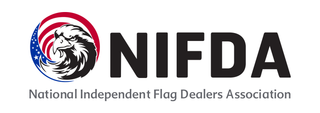PageFly
17-11-2023
Beach Warning Flags and What They Mean

As you prepare for a relaxing day by the sea, understanding the language of beach warning flags is paramount for ensuring both safety and enjoyment. At Flagpoles Etc., we're not just about providing information; we're about improving your beach experience with essential safety knowledge. Read on to learn more about beach warning flags, what each of the colors represents, and how you can ensure a safe beach experience.
Understanding these flags is more than a safety measure; it's your key to a worry-free day under the sun. Whether it’s the urgent caution of a red flag or the welcoming assurance of a green one, each flag stands for the ocean’s condition. This knowledge doesn't just safeguard you; it enhances your beach experience, allowing you to embrace the ocean's splendor with confidence and peace of mind.
The Essential Role of Beach Warning Flags
Beach warning flags are not mere decorations; they are essential indicators of beach safety. Knowing and understanding these flags can mean the difference between a delightful beach day and an unsafe situation.
Universal Symbols of Beach Safety
Regardless of your location, beach flags offer easily understandable safety messages. These universal symbols are your guide to a secure beach visit.
The Red Flag: Signaling High Hazard
The red flag is a critical warning, indicating dangerous conditions like strong currents or rough surf. Spotting this flag demands heightened caution.
Double Red Flag: Beach Closure Alert
Encountering two red flags signals an urgent message: the beach is closed due to extremely dangerous conditions.
The Yellow Flag: Medium Hazard Alert
A step down from the red, the yellow flag indicates moderate risks, such as medium surf or currents. While less severe than red, caution is still imperative.
The Green Flag: Low Hazard Conditions
The green flag signals low hazard conditions, suggesting calm waters. However, the unpredictability of the ocean means vigilance is always key.
The Purple Flag: Dangerous Marine Life Presence
The purple flag warns of dangerous marine life in the vicinity, like jellyfish, stingrays, or sharks. It's a crucial alert for swimmers and surfers alike.
The Orange Flag: Environmental Hazard Warning
An orange flag indicates environmental hazards, such as pollution or high bacterial counts, urging swimmers to proceed with cautiousness.
Blue and Yellow Flags: Designating Surfing and Swimming Zones
These flags help segregate surfing and swimming areas, reducing the risk of accidents and promoting a safer beach environment.
The Black and White Checkered Flag: Watercraft Designated Area
This flag marks areas reserved for watercraft activities, such as jet skis or boats, enhancing safety for all beachgoers.
Mastering Flag Etiquette and Beach Safety
Understanding beach flags is crucial, but it’s just a part of ensuring safety. Familiarizing yourself with basic beach etiquette and safety tips is equally important.
Always Swim Near a Lifeguard
Swimming near a lifeguard greatly enhances safety, as they are trained to spot and respond to various beach emergencies.
Adhering to Flags and Lifeguard Instructions
Paying attention to the flags and lifeguard directives is crucial for your safety and well-being.
Awareness of Rip Currents
Understanding and recognizing rip currents is vital, as they pose a common risk at many beaches.
Teaching Children About Beach Safety
Educating children on beach safety and the meanings of different flags is essential for fostering a safe beach environment.
Utilizing Interactive Learning Tools
Interactive tools and games effectively teach children about beach safety and the importance of warning flags.
Conclusion: Safety First for a Memorable Beach Experience
Understanding and respecting beach warning flags is essential for a safe and enjoyable beach visit. These flags are not just precautionary tools; they are crucial for guiding us through the ever-changing conditions of the ocean. By being aware of these important signals, we contribute to a safer beach environment for everyone.
The beach, a place for relaxation and fun, requires our respect for nature's power. The varied colors of the flags, from red’s caution to green’s calm, play a vital role in ensuring our safety. This knowledge of beach flags creates a shared understanding among beachgoers, fostering a community that values safety and responsibly enjoys the beach.
It's important to share this knowledge, particularly with younger generations, to promote a culture of safety and respect for the natural environment. As we prepare for our beach trips, let's remember to educate ourselves and others about the significance of these flags. A mindful approach to beach safety ensures that every visit to the shore is filled with safe, happy, and unforgettable experiences.

FAQs About Beach Warning Flags
Author

PageFly
Tags
Travel
Tour Guide
You May Also Like
The POW MIA Flag: Meaning and History
The Role of Flagpoles in Building Design
Protect Your Flags From Winter Damage

Give us a call today
We take great pride in offering top quality products at unbeatable prices. We are your direct source for everything flags and flagpoles.
Toll Free (888) 735-5591Fax (775) 665-6526






